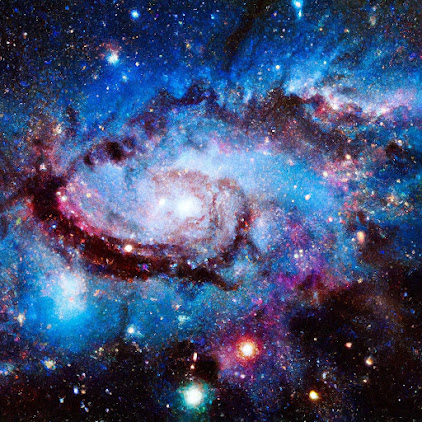Pulsating stars that reveal the motion of spiral galaxies are called cepheid variables. Cepheids are bright, yellowish stars that pulsate regularly, varying in brightness by up to a factor of 100 over periods of a few days to several months. Astronomers use cepheids to study the rotation of spiral galaxies by measuring the velocities of cepheids at different locations in the galaxy. The velocities of cepheids can be measured by observing their Doppler shifts.The Doppler effect is the apparent change in frequency of a wave in relation to an observer moving relative to the wave source. It is named after the Austrian physicist Christian Doppler, who described the phenomenon in 1842.
The Doppler effect can be observed with any type of wave, including sound waves, light waves, and water waves. The Doppler effect can also be used to measure the speed of moving objects. For example, astronomers use the Doppler shift of light from stars and galaxies to measure their velocities. This information can be used to study the motion of stars and galaxies, and to learn about the structure and evolution of the universe.
The Doppler effect can also be used to measure the speed of moving objects. For example, astronomers use the Doppler shift of light from stars and galaxies to measure their velocities. This information can be used to study the motion of stars and galaxies, and to learn about the structure and evolution of the universe.
Here is a simple formula for the Doppler effect:
The Doppler effect is the apparent change in frequency of a wave in relation to an observer moving relative to the wave source. It is named after the Austrian physicist Christian Doppler, who described the phenomenon in 1842.
Here is a simple formula for the Doppler effect:
f_o = f_s * (v + v_o) / (v - v_s)
f_o is the observed frequency
f_s is the source frequency
v is the speed of the wave
v_o is the speed of the observer
v_s is the speed of the source
If the observer and source are moving towards each other, the observed frequency will be higher than the source frequency. This is called a blueshift. If the observer and source are moving away from each other, the observed frequency will be lower than the source frequency. This is called a redshift.
Here are one example of the Doppler effect in action:
Light waves: Astronomers use the Doppler shift of light from stars and galaxies to measure their velocities. This information can be used to study the motion of stars and galaxies.
The Doppler effect is a fascinating phenomenon that has a wide range of applications in science and engineering.
There are two types of Cepheid variable stars: classical Cepheids and Type II Cepheids.
Classical Cepheids are younger and more massive than Type II Cepheids. They are also brighter and have longer pulsation periods, typically ranging from 1.5 to 50 days. Classical Cepheids are found in the spiral arms of galaxies, where they are used to measure distances to other galaxies.
Type II Cepheids are older and less massive than classical Cepheids. They are also fainter and have shorter pulsation periods, typically ranging from 1 to 20 days. Type II Cepheids are found in the globular clusters and bulges of galaxies.
How many Cepheids have been discovered?
It is difficult to say exactly how many Cepheids have been discovered, as new ones are being found all the time. However, astronomers estimate that there are millions of Cepheids in the Milky Way galaxy alone.
- Classical Cepheids: Around 800 classical Cepheids are known in the Milky Way galaxy, out of an expected total of over 6,000. Several thousand more are known in the Magellanic Clouds, with more discovered in other galaxies.
- Type II Cepheids: Tens of thousands of Type II Cepheids have been discovered in the Milky Way galaxy and other nearby galaxies.
Cepheids are important astronomical objects because they can be used to measure distances to other galaxies. By measuring the period and apparent brightness of a Cepheid, astronomers can calculate its absolute brightness. This can then be used to calculate the distance to the galaxy in which the Cepheid is located.
Cepheids have played a crucial role in establishing the cosmic distance scale. By measuring the distances to nearby galaxies, astronomers have been able to calibrate other distance indicators, such as supernovae and Tully-Fisher relations. This has allowed astronomers to map out the structure of the universe and to measure the Hubble constant, which is the rate at which the universe is expanding.





Comments
Post a Comment